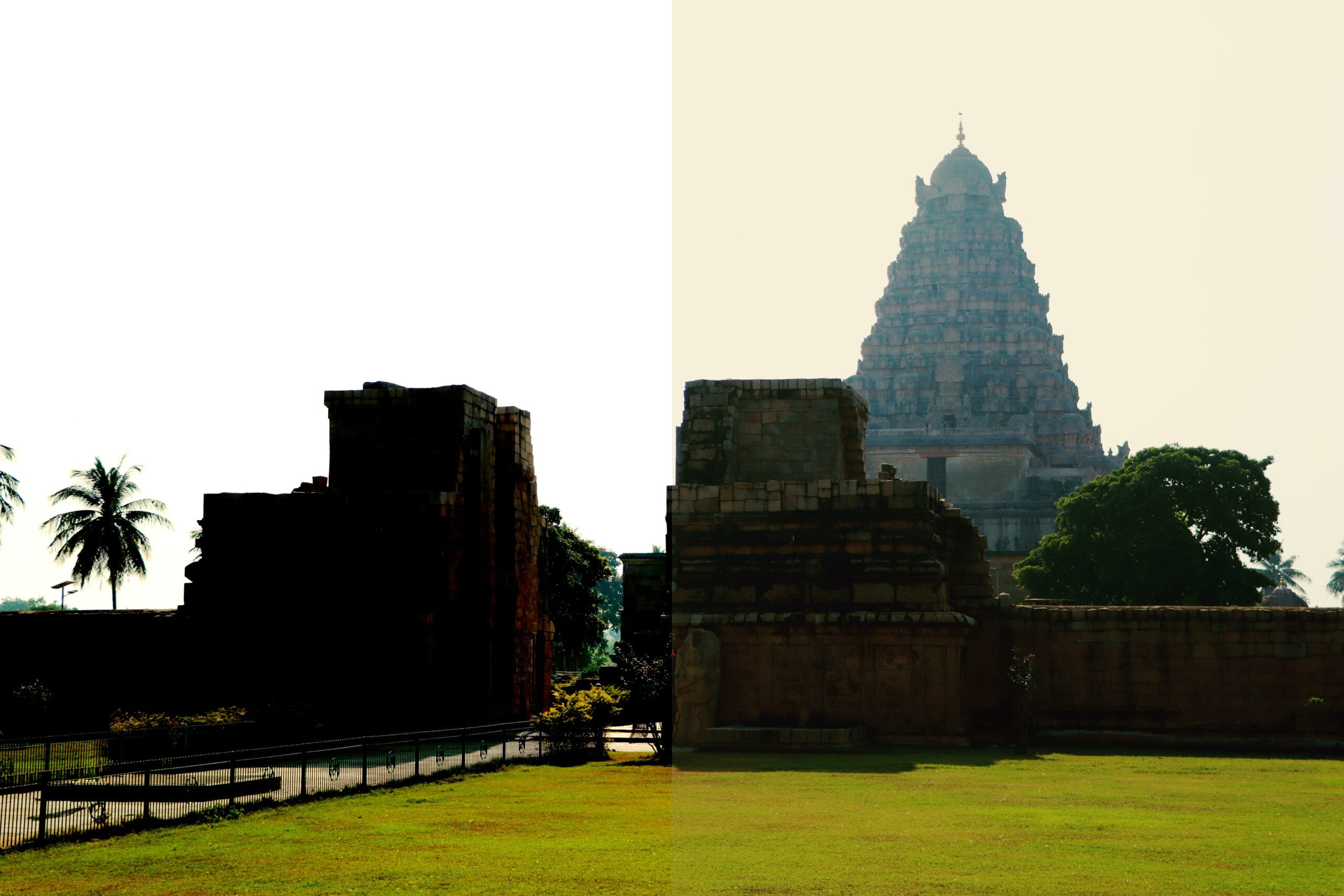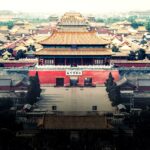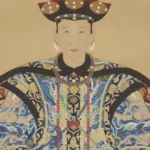As we step into the realm of ancient China, a fascinating era emerges from the annals of history. The Han Dynasty, known for its illustrious golden age, captivates us with its transformative ideas and foundations that shaped Chinese civilization for centuries to come. In this article, we delve into the depths of this remarkable period, exploring the ideologies and philosophies that laid the groundwork for the empire’s unprecedented prosperity. Join me as we illuminate the profound concepts, such as Confucianism, functional bureaucracy, and innovative agricultural practices, which propelled the Han Dynasty to its heights and left an indelible mark on Chinese history.
Han Dynasty Golden Age: Ideas It Built On
The Han Dynasty’s golden age was characterized by an array of transformative ideas that formed the foundation of its prosperity and enduring legacy. By delving into the political, social, and cultural context of this remarkable era, we can uncover the key concepts that propelled the empire to new heights.
Confucianism: The Moral Compass
One of the central ideologies that influenced the Han Dynasty was Confucianism. This philosophical system emphasized the importance of social harmony, respect for authority, and ethical behavior. The Han rulers embraced Confucian principles and established the imperial university to teach the Five Classics of Confucianism. By integrating Confucian values into the fabric of society, the dynasty fostered a sense of unity and stability.
As the renowned philosopher Confucius once said, “To put the world in order, we must first put the nation in order; to put the nation in order, we must first put the family in order.” These words exemplify the essence of Confucianism, which laid the groundwork for the Han Dynasty’s governance and societal structure.
Functional Bureaucracy: Streamlining Administration
To effectively implement their policies and maintain control over a vast empire, the Han rulers developed a highly efficient bureaucratic system. This system sought to select officials based on their merit and ability, as opposed to their social status or background. By prioritizing competence and knowledge, the dynasty ensured that governance was carried out by capable individuals who were dedicated to the welfare of the state.
The establishment of a functional bureaucracy brought about a sense of order and fairness in the administration of the empire. As the saying goes, “A well-structured bureaucracy is like a well-oiled machine.” This analogy captures the essence of the Han Dynasty’s administrative system and highlights its impact on the empire’s success.
Innovative Agricultural Practices: Feeding the Nation
To meet the growing demands of a burgeoning population, the Han Dynasty embraced innovative agricultural practices. The introduction of new farming techniques, such as crop rotation and the widespread use of iron tools, significantly increased agricultural productivity. These advancements allowed for more efficient land utilization and played a pivotal role in ensuring food security for the empire.
The Han rulers understood the importance of agriculture as the backbone of a prosperous nation. As the saying goes, “A nation that can feed its people is a nation that thrives.” This sentiment resonated strongly with the dynasty, and their commitment to agricultural innovation played a crucial role in supporting the empire’s economic growth and stability.
In summary, the Han Dynasty’s golden age was built on transformative ideas that shaped the empire’s destiny. Confucianism provided a moral compass, guiding the society towards harmony and ethical conduct. The functional bureaucracy streamlined administration, ensuring competent individuals were in charge. Innovative agricultural practices laid the foundation for food security and economic stability.
To truly understand the significance of the Han Dynasty’s golden age, it is imperative to explore the ideas on which it was built. They were the driving force behind the empire’s achievements and continue to resonate in Chinese history today.
“Confucianism, functional bureaucracy, and innovative agricultural practices were the pillars upon which the Han Dynasty’s golden age stood, guiding it towards prosperity and leaving an indelible mark on Chinese history.”
The Han Dynasty Golden Age refers to a remarkable period in ancient Chinese history that saw unprecedented cultural, scientific, and technological advancements. During this era, the empire flourished under the wise leadership of its emperors and the remarkable contributions of its scholars. From the establishment of a highly efficient bureaucratic system to the development of advanced agricultural techniques, the Han Dynasty truly set the stage for a golden age. To dive deeper into the wonders of this magnificent era, click here: Han Dynasty Golden Age.
During the medieval period in China, the country was in a fragmented state after the fall of the Han Dynasty. This period, known as the Three Kingdoms, saw the rise of six different Native Chinese dynasties ruling in the south from the fall of the Empire to 589. As the Han Empire collapsed, nomadic societies from the north took advantage and invaded, establishing their own dynasties. The collapse of the empire had a profound effect on the Chinese middle class and intellectuals. Confucianism, which was supposed to maintain order, was seen as less pragmatic in this new world, leading many intellectuals to turn to more esoteric or spiritual beliefs like Taoism.
[youtube v=”0T4tGlmrsQ4″]
While Taoism provided spiritual solace, it was not enough to fulfill the majority of the population’s needs during this tumultuous time. People were in search of another belief system, and they found it in Buddhism. Buddhism arrived in China through missionaries and merchants traveling the Silk Road. By the time of the Han Empire’s decline, Buddhism had already taken hold. Its ideals, especially those of the Mahayana School, spread among all classes as it complemented Taoism. Initially seen as foreign, Buddhism eventually became integrated into Chinese culture. Monks, like Fazang, played a crucial role in spreading Buddhism.
After almost 400 years of fragmentation, China was finally reunified in 581 under Yang Jian, the founder of the Sui Dynasty. Yang Jian, who became Emperor Wen, promoted Taoism and Buddhism in response to Confucianism’s declining popularity. He also undertook massive construction projects, including the building of the Grand Canal. This canal linked the capital to the Yellow River and was later extended to the Yangtze, greatly improving communication and access to resources between the north and south.
Emperor Yang, Wen’s son, continued the canal project and used it as an imperial waterway for grand processions. However, the Sui Dynasty faced challenges in administering its vast empire, leading to negative views of the emperor. Civil war broke out in 613, and the dynasty eventually fell after a failed invasion of Goguryeo, an early Korean state. Li Yuan, one of the emperor’s generals, seized power and established the Tang Dynasty in 618.
The Tang Dynasty, often referred to as a golden age, lasted for nearly 300 years. Under Emperor Taizong’s rule, China expanded its size and power, pacifying the western regions and extending its influence into Tibet and the areas south of the Yangtze River. The Tang Dynasty was not just a military power; it also invested in infrastructure, public works, arts, and culture. Buddhism played a significant role in this period, with monasteries becoming more prevalent and the capital city of Chang’an experiencing a cultural renaissance.
Despite internal political challenges, such as intrigues and power struggles, the Tang Dynasty thrived. However, around the mid-700s, the empire began to weaken due to factors such as natural disasters, external threats, and internal rebellions. Eventually, the dynasty declined, leading to the fragmentation known as the Five Dynasties and Ten Kingdoms period.
In 960, the Song Dynasty took power, founded by Emperor Taizu. The Song Dynasty failed to reconquer the lands of nomadic groups to the north but experienced economic and cultural prosperity. While the capital was eventually moved south to Lin’an (Hangzhou), the southern Song period was marked by economic growth, the rise of scholars, military alliances, and a significant navy. The northern territories were conquered by the Jin Dynasty (Great Jin), which later became known as the Jin Empire or the later Jurchen Jin.
In 1234, the Mongols conquered the Jin, establishing themselves as rulers of northern China and leading to the Battle of Yamen in 1279. The Song made their final stand in this battle but were decisively defeated by the Mongols, marking the end of the Song Dynasty. Kublai Khan founded the Yuan Dynasty in 1271, claiming China and ruling with the assistance of a hierarchical political structure.
During this time, politics in China were mostly driven by the emperor, who had ultimate authority. The Grand Chancellor oversaw the three departments and six ministries, with officials chosen through civil service examinations. The Tang period marked the rise of the literati, an intellectual class of non-aristocratic landowners who excelled in these examinations and became the new elite in China.
China’s economy also experienced significant growth during this golden age. Improvements in irrigation, the introduction of new rice crops, and land reforms contributed to economic prosperity. Manufacturing boomed, with the textile industry playing a crucial role. Gunpowder was invented, and international trade, both over land and sea, thrived. The Silk Road expanded trade routes, while advancements in technology, such as the compass and stonepost rudder, allowed the Chinese to engage in Indian Ocean trade.
In conclusion, the golden age of medieval China was marked by reunification, the spread of Buddhism, advancements in infrastructure and culture, economic growth, and vibrant international trade. However, internal struggles, natural disasters, and external invasions eventually led to the decline of these dynasties and China’s fragmentation once again.
FAQ
Question 1
What were the key factors that contributed to the success of the Han Dynasty’s golden age?
Answer 1
The success of the Han Dynasty’s golden age can be attributed to several factors. Firstly, the establishment of a functional bureaucracy allowed for efficient governance and the implementation of effective policies. Additionally, the adoption of Confucianism as the state ideology promoted moral values and social harmony. Innovations in agriculture, such as the widespread use of the iron plow and crop rotation, greatly increased food production and contributed to economic prosperity. Furthermore, the stability and peace achieved through the reunification of China brought about advancements in various fields, including metallurgy and seismology.
Question 2
What were the main ideologies and philosophies that shaped the Han Dynasty’s golden age?
Answer 2
The Han Dynasty’s golden age was shaped by several ideologies and philosophies. Confucianism played a central role in both the political and social aspects of Han society. It emphasized filial piety, respect for authority, and the importance of education. Confucian principles were incorporated into the imperial examination system, where individuals were selected for government positions based on their knowledge of Confucian classics. Additionally, Legalism served as a pragmatic approach to governance, focusing on strict laws and harsh punishments. Daoism, with its emphasis on harmony with nature and the pursuit of inner balance, also had an influence during this period.
Question 3
What cultural milestones and developments were achieved during the Han Dynasty’s golden age?
Answer 3
The Han Dynasty’s golden age witnessed significant cultural milestones and developments. The establishment of the imperial university, known as Taixue, aimed to promote Confucian teachings and teach the Five Classics, which were foundational texts in Confucianism. This enhanced the importance of education and intellectual pursuits in Han society. Moreover, advancements in literature and poetry flourished during this time, with notable works such as the “Shi Jing” (Book of Songs) and the “Chuci” (Songs of Chu). The development of historiography also thrived, as evidenced by Sima Qian’s monumental work, the “Records of the Grand Historian.”
Question 4
What were some of the important inventions and innovations during the Han Dynasty’s golden age?
Answer 4
The Han Dynasty’s golden age witnessed significant inventions and innovations that contributed to its prosperity. One notable example was the invention of paper, which revolutionized the spread of knowledge and the recording of information. The use of the iron plow and advanced agricultural techniques improved farming productivity, leading to increased food production. The introduction of watermills facilitated various industries, including milling grain and manufacturing silk. Furthermore, important technological advancements were made in the field of medicine, with the development of acupuncture and the use of herbal remedies.
Question 5
How did the end of civil war and the reunification of China impact the Han Dynasty’s golden age?
Answer 5
The end of civil war and the reunification of China had a profound impact on the Han Dynasty’s golden age. It brought about a period of stability and peace, allowing for social and economic development. The reunification of the empire allowed for the consolidation of power and the implementation of effective policies. The centralization of authority enabled the government to focus on promoting agriculture, trade, and education, leading to increased prosperity. Furthermore, the stability and unity provided a favorable environment for intellectual pursuits, cultural milestones, and technological advancements to flourish.
- Star Ring Trends: Etsy vs Amazon - March 28, 2025
- Boost Pollinator Habitats: Baby Blue Eyes Sustainable Farming Guide - March 28, 2025
- Protect Big Black Bears: Effective Conservation Strategies - March 28, 2025
















